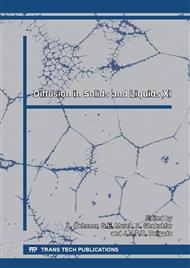p.142
p.148
p.152
p.157
p.163
p.168
p.173
p.177
p.182
The Effect of Salt Solutions in the Capillarity Absorption Coefficient of Red Brick Samples
Abstract:
Rising damp is one of construction’s major problems associated with use of porous materials in this industry. This mechanism has a massive influence on the degradation of historical buildings since they were built in a time when construction technologies made no effort to prevent this kind of pathologies. The rising damp by itself can reduce the aesthetical value of the building and, when combined with the existence of soluble salts in the building and in the ground water can even lead to material decomposition and compromise the structural performance of the building. This happens due to the migration of the salt ions dissolved in water into the porous network of the building’s walls where they remain and crystalize after water evaporates, dealing great pressures against the pore walls and eventually resulting in their fracture after many cycles of crystallization/dissolution.The experimental work intended to study the effect of two different saturated solutions of sodium sulphate and potassium chloride in the capillary absorption curves obtained through the partial immersion of red brick samples. In the end of this paper there will be a macroscopic evaluation of the sample’s crystallized top surface, obtained after a partial drying period. The results revealed significant differences in the capillary coefficients obtained when samples were tested with salt solutions.
Info:
Periodical:
Pages:
168-172
Citation:
Online since:
July 2016
Authors:
Keywords:
Price:
Сopyright:
© 2016 Trans Tech Publications Ltd. All Rights Reserved
Share:
Citation:



